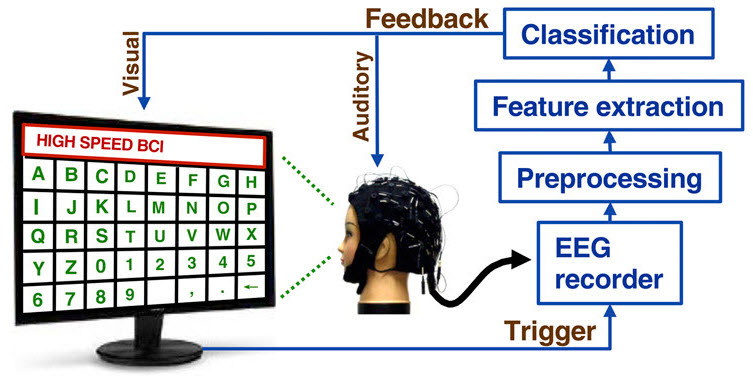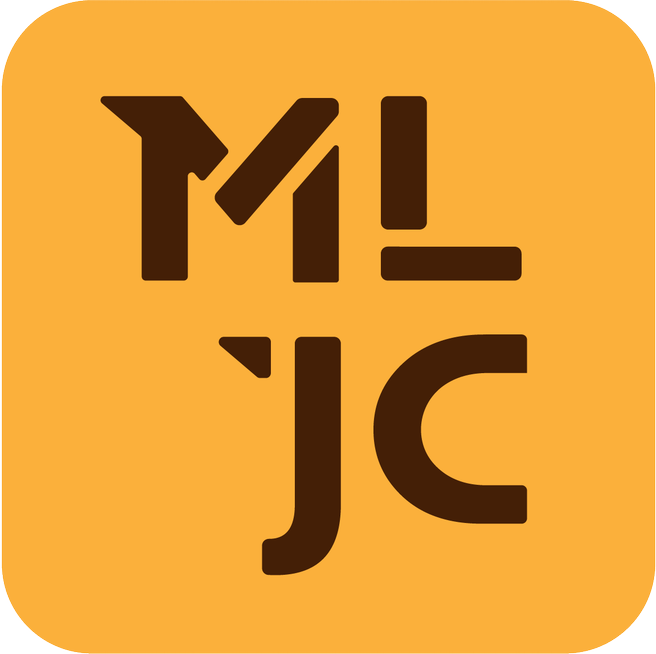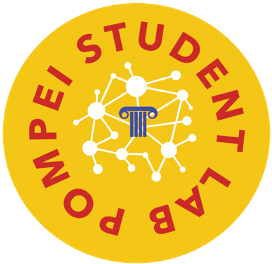The P300 speller BCI system consisted of electroencephalography acquisition connected to real-time processing software and separate keyboard-display control software. It was first described by Sutton et al.( 1965 ) and has been widely studied since then to explore higher cortical functions in humans (for review see Bashore & Van der Molen, 1991; Donchin, 1981; Duncan et al., 2009; Fabiani et al., 1987; Polich, 2007; Pritchard, 1981 ). Although it often occurs at a latency of about 300 ms relative to the eliciting stimulus (hence the designation of P300), its latency may vary from 250 to 750 ms (Comerchero & Polich, 1999 ; Maglieroet al., 1984; McCarthy & Donchin, 1981; Polich, 2007 ). This variability in latency reflects the fact that the P300 is elicited by the decision, not necessarily conscious, that a rare event has occurred, and the decision latency can and does, vary with the nature (e.g., the difficulty) of the decision (Kutas et al., 1977 ). The P300 is usually largest over the central parietal scalp and attenuates gradually as the distance from this area increases.
@credit: Xiaogang Chen et al./PNAS

A visual paradigm based P300 speller system consists of several stages:
- Stimulating a subject by presenting a P300 processing;
- Feature extraction;
- Classification.
During the Hackathon we faced a problem with two different paradigms used to implement the P300 speller: (i) the row/column (RC) speller highlights multiple characters at once and (ii) the single character (SC) speller flashes each character individually (see "How many people are able to control a P300-based brain-computer interface (BCI)?" by Christoph Guger et al. for more details).
We started with 5 matrix of raw data from 5 different patients. Each matrix had a dimension of: 60000 rows and 8 columns (one column for each channel).
To get a local copy up and running follow this simple step.
- Clone the repo
git clone https://github.com/MachineLearningJournalClub/P300_Speller_VBH_2021
And you will have the notebooks and the results on your PC. Due to some privacy policy, we can't share the dataset.
In this repository there are all the notebooks we made during the Hackathon. All of us worked on different part of the task and finally, we put all togheter in the "Hackathon_P300_Speller_Final.ipynb" file. To see the final result so, look at this file. If you like to see which were our ideas and what we did individually look at each file separated.
Distributed under the MIT License. See LICENSE for more information.
Luca Bottero - email : luca.bottero192@edu.unito.it - linkedin
Ilaria Gesmundo - ila.gesmundo@gmail.com : - linkedin
Letizia Pizzini - email : letizia.pizzini@edu.unito.it - linkedin
Aurora Micheli - email : aurora.micheli@edu.unito.it - linkedin
Flavio Sartori - email : flavio.sartori@edu.unito.it - linkedin
Project Link: https://github.com/MachineLearningJournalClub/P300_Speller_VBH_2021










